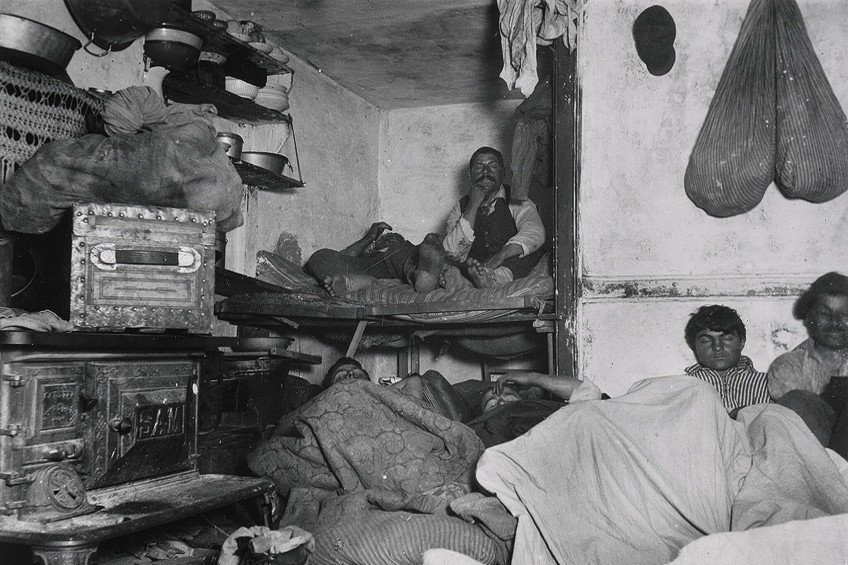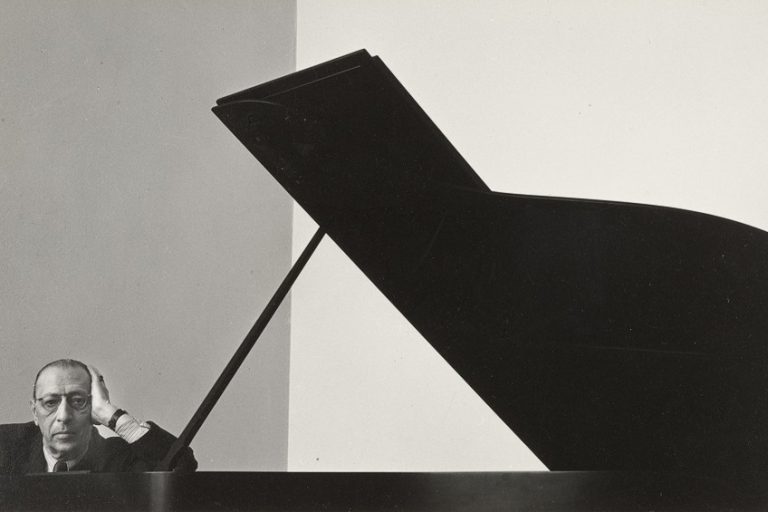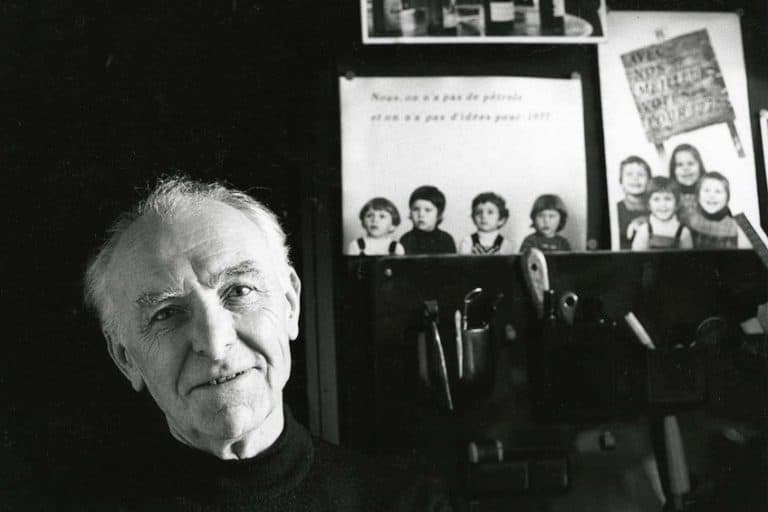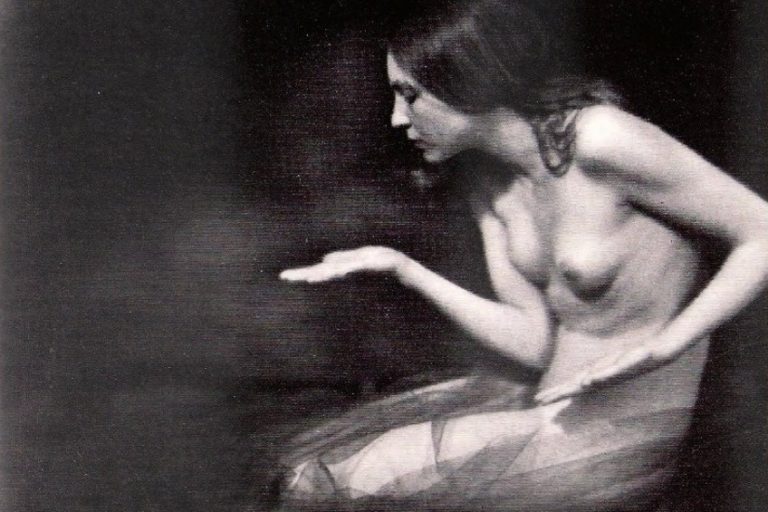Jacob Riis – Discover the Life of the Documentary Photographer
Who was Jacob Riis? An iconic pioneer in social documentary photography, Jacob Riis was one of the most famous early flash photographers of the 19th century, whose enduring personal life and career in photography will inspire you! In this article, we will explore Jacob Riis’ biography in detail, while looking at his history in journalism, photography, and literature. Keep reading to learn more about this famous Danish-American photographer!
Table of Contents
An Advocate of Social Reform: A Jacob Riis Biography
| Artist Name | Jacob August Riis |
| Date of Birth | 3 May 1849 |
| Date of Death | 26 May 1914 |
| Nationality | Danish-American |
| Associated Movements, Themes, and Styles | Social reform and journalism |
| Mediums | Photography |
In 1887, photography had already developed significantly, however, a German invention called flash powder changed the way photographers could adapt to their environments and opened up a new world of possibilities in documentary photography for people like Jacob Riis. But who was Jacob Riis?
Today, Riis is recognized as one of the early fathers of flash photography, whose works centered around bringing to light the social issues of the day, including poverty and the everyday living conditions of impoverished groups in the slums.
Jacob Riis is also credited with endorsing the model tenements in New York alongside Lawrence Veiller, who was a renowned leader in social reform and urban planning. Below, we will discuss further the life and career of Jacob Riis, including his contribution to social documentary photography and a few famous Jacob Riis works that you will enjoy.
Early Life and Travels
Jacob Riis was born in Ribe in the southwest Jutland of Denmark in 1849 as one of 15 children to his father, a journalist and schoolmaster named Niels Edward Riis, and his mother Carolina Riis. From a young age, Riis had been exposed to tragedy and death since several of his siblings had already passed away, leaving Riis to witness the grief of his family. However, despite the looming cloud of grief in the air, Riis was undoubtedly happy at heart as he later recalled.
Jacob was pushed to improve his English by his father, who encouraged him to study the works of James Fenimore Cooper and Charles Dickens, and who had hoped that the young Riis would become a writer.
Instead, Riis had plans to become a carpenter and became an apprentice at a local carpentry business. Here, he fell in love with the daughter of the company’s owner, who strongly disapproved of his intentions to be with his daughter, Elisabeth Gjørtz, and sent Riis to Copenhagen to finish his apprenticeship. Riis’ return home was met with a lack of demand in his trade and he then opted to emigrate to the United States. In 1870, Riis arrived in New York at the age of 21 with $40, a locket with Gjørtz’s hair, and letters to the Danish Consul.
After five days in New York, Riis was penniless and sought employment as a carpenter at Brady’s Bend Iron Works, where he soon switched to working in the mines for the extra pay. After discovering the terrible conditions of the mines, he returned to his old position at Brady’s Bend Iron Works.

In 1870, Riis had also attempted to join the French army, to which his efforts were met with rejection from the French Consulate. After struggling in New York without money, he was rescued by a priest, who sheltered him for the time being. Riis then journeyed to Mount Vernon where he worked multiple odd jobs. He tried again to join the war efforts after discovering a recruitment advertisement in the New York Sun but was also rejected. For months after, Riis lived in poverty and lost most of his items, except for the company of a stray dog.
After another failed attempt to enlist, Riis moved to Philadelphia while working odd jobs to fund his move.
He was luckily cared for by a Danish consul named Ferdinand Myhlertz, who gave Riis shelter for two weeks. Riis managed to land a job as a carpenter for a few Scandinavian communities and after building his finances up a little, he attempted to land a job at a newspaper. After several rejections from various magazines and newspapers across Chicago, New York, and Pittsburgh, Riis was exhausted from the underlying evils of the industry and the occasional exploitation of his efforts by employers and associates. In Pittsburgh, he ended up with a fever, followed by a painful message that Gjørtz was now engaged to a cavalry officer.
Career in Journalism
Perhaps the shocking news of his lover’s engagement had motivated him to pursue his career with more vigor and resilience. Riis relocated to New York once again, where he landed a job as city editor for a local newspaper. But to his dismay, he discovered that the editor-in-chief was a challenging personality who was also dishonest. Riis left the newspaper after two weeks and landed a new job at the New York News Association as a trainee, where his writing saw much development. Here, Riis wrote about his passions, specifically his experiences living with immigrant communities, which earned him a promotion as an editor for a political periodical.
In a whirlwind of chaos, and perhaps destiny, Riis’ publication went bankrupt and was followed by news that his aunt, older brother, and Gjørtz’s fiancé had all passed away.
Riis took the opportunity to propose to Gjørtz and purchased the bankrupt newspaper using $75. His success had just begun as he used the publication to bring the newspaper’s issues to light and expose his former employers, who had recently acquired political positions. As such, his newspaper took off and allowed him to pay off his debts. Riis’ pen had quite the effect and his success with Gjørtz was seen in his invitation to join her in Denmark to discuss his proposal. The politicians eventually purchased Riis’ company for five times the original price, which funded Riis’ return to Denmark and placed him in a position of financial security.
Riis married Gjørtz and moved with her to New York, where he landed a job as an editor for The Brooklyn News. In an innovative move, Riis championed the magic lantern advertisements across the city and as far as Pennsylvania. He then found another job as a police reporter close to the Mulberry Street police headquarters, which was an area known for local criminals and impoverished groups, also recognized as “death’s thoroughfare”.
Flash Photography and Style
Jacob Riis’ photography was defined by his documentary approach to photography, which made him one of the first figures to pioneer documentary photography. Riis also incorporated elements of symbolism as he photographed what most people saw as the “mundane” and ordinary. His signature use of the clothesline as a focus point in a few of his works was also highlighted as the honest living of those who were struggling to make ends meet. In a statement made by Riis, he claimed that the “true line to be drawn between honest poverty and pauperism was the clothing line, which in it, one can recognize the effort to remain clean and is an indication of one’s desire to be honest.
An important aspect of what Riis was drawn to in photography and documenting the lives of those who struggled to survive urban life was greatly shaped by his own experiences with poverty and his passion for social reform.
It was by the late 1880s that he started photographing the communities and living spaces of the impoverished communities in New York using a flash lamp. As such, this became known as the earliest example of flash photography. In addition to his seemingly objective and documentary photography practice, Riis also penned his thoughts passionately in his books to further drive home a significant response from the public.

Riis’ discovery of flash photography through flash powder, an invention by Johannes Gaedicke and Adolf Miethe, Riis was able to recognize the possibilities in expanding his photographic style and joined hands with John Nagle, Richard Hoe Lawrence, and Henry Piffard to document the slums. Their works were then published in an 1888 edition of The Sun with an unsigned article written by Riis. This early group of flash photographers was among the first American photographers to use flash photography, which evolved from pistol lamps to the use of magnesium powders and frying pans. As Riis worked during the evening to capture the impoverished neighborhoods of New York, he photographed everything.
From tenement apartments to dark streets and stale beer dives, Riis highlighted the living conditions of criminals, who were born from poverty and desperation.
Notable Influences
Of significant influence on his photography and publication successes in the early 20th century was Riis’ friendship with Theodore Roosevelt. The two became acquainted in 1895 when Theodore Roosevelt was elected as the president of the Board of Commissioners at the New York City Police Department. It was then that Roosevelt asked Riis to introduce him to evening police work, during which, the duo discovered that nine out of 10 police officers were missing. This inspired Riis’ next article, which led to Roosevelt gaining motivation to improve the inefficiencies of the force.
Riis was also known to act as an advisor to Roosevelt on a local and federal basis. It was no secret that Roosevelt was inspired by Riis and his efforts to correct injustices and had even managed the closures of the lodging rooms, where Riis had previously suffered during his first experiences in New York.
Through his honesty and passion for exposing social injustices, Riis had gained a friend for life and was described by Roosevelt as “the best American” he ever knew, despite still being quite young. After Roosevelt became president, he penned a special tribute to Riis in 1901 in an edition of McClure’s Magazine, which described Riis as “the most useful citizen of New York”.
Important Publications
Jacob Riis’ works in literature include his first successful book titled How the Other Half Lives received significant attention, especially from Theodore Roosevelt, who gained the photographer’s acquaintance after reading his work. If Riis had not documented the state of impoverished people living in New York at the time, there would not have been a change in the legislation to improve the tenement house issues. Riis’ contribution is thus considered a predecessor to the 1900s muckraking journalism movement that aimed to expose the corrupt actions of notable establishments through sensationalist literature.
Another key contribution that Riis made was his five-column story that exposed the water quality of New York.
The piece Some Things We Drink was published in 1891 in the New York Evening Sun, which featured six images shot by Riis, and which are now lost. Riis traveled to the watershed to capture the evidence that he found indicating that sewerage water had contaminated the city’s drinking water. Riis further investigated the issue after consulting with doctors to build his case. Through Riis’ investigation and concern for public health and safety, the city was saved from a possible cholera outbreak.
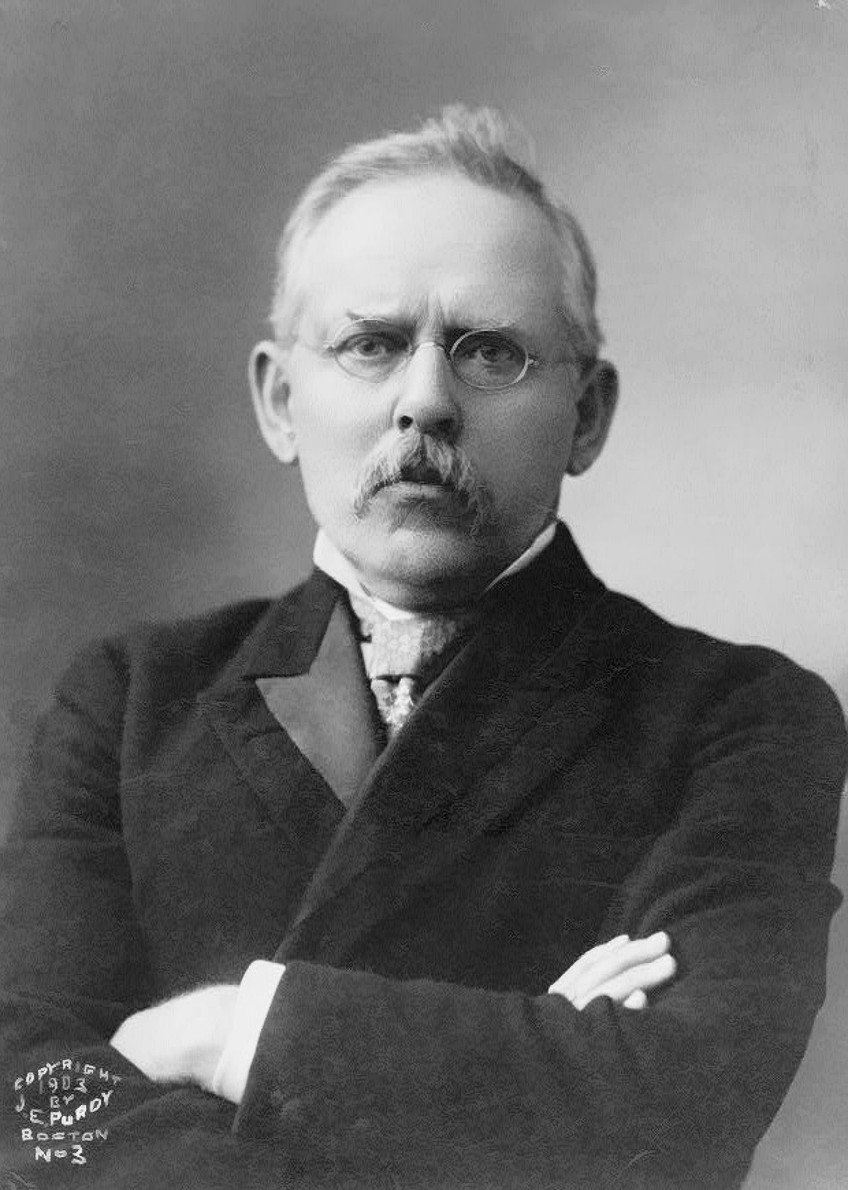
Another key contribution by the social documentary photographer was his advocacy toward demolishing the slums around Five Points in favor of the city building a park, which resulted in the Small Park Act of 1887. In 1892, Riis published a sequel to his first successful publication titled Children of the Poor, which was an account of Riis’ experiences with children he met on his travels in impoverished communities.
His autobiography, “The Making of an American”, detailed his early life and struggles as an immigrant living in the United States, as well as how he landed his role as a reporter and the elements that sparked his desire for social reform.
Among those experiences was his time spent in the immigrant enclaves, which was included in the autobiography. The underlying theme of his work was highlighting the fact that the United States was a place of opportunity for “those bold enough to take chances on their future”. One of the chapters in his book was also penned from his deceased wife’s point of view and her experience before she married Riis.
Death and Legacy
In 1901, Riis penned his own autobiography titled The Making of an American and captured his experiences at the Forest Service in detail in Ranger Trails (1937). In 1905, his wife passed away and he remarried and relocated in 1907. Jacob Riis died on his farm in Massachusetts on 26 May 1914 and was buried with an unmarked boulder at the Riverside Cemetery. Riis’ legacy was remembered for his passionate efforts to spark social reform on subjects and topics that he cared about.
He was also criticized for his position of “interfering” with the livelihoods of others since his admirers were predominantly middle-class.
Some scholars found that Riis was a figure who was repulsed by the middle class and instead appealed to the fears and stresses of the working class. While there are differing opinions on the character of Jacob Riis, it is evident that without some of his investigative efforts and images, there would have been no or slow societal reform in key areas of New York’s history.
Exploring Famous Jacob Riis Photographs
Now that you have an overview of Jacob Riis’ biography, career development, and personal contributions to social reform, you can take a look at a few famous Jacob Riis photographs that show us his approach and style in photography.
Dens of Death (1880 – 1892)
| Date | 1880 – 1892 |
| Medium | Gelatin silver print |
| Dimensions (cm) | 19.7 x 24.6 |
| Where It Is Housed | International Center of Photography, New York City, United States |
This grim scene conveys the absence of human presence in a site that is uninhabitable. The photo captured the homes built by those along Baxter Street, which are shoddily built and appear fragile and dangerous to anyone who might not fathom even living in such conditions. According to Riis’ investigation on the scene, he found that the structures were built only due to complaints about the foul smells.
After a sanitary worker was sent to investigate, it was discovered that a waste pipe was disconnected from the sewer, and as such, the homes that were built were created to sell, regardless of who they killed.
The builder behind the project was Buddensiek, who eventually landed in jail after his construction fell apart and killed his workmen. Riis uncovered the typhoid crisis in the area, which was a result of the neglect of the city. This subject was incredibly close to Riis since he had already lost siblings to unsanitary conditions in his childhood.
Lodgers in Bayard Street Tenement, Five Cents a Spot (1889)
| Date | 1889 |
| Medium | Gelatin silver print |
| Dimensions (cm) | 15.7 x 12 |
| Where It Is Housed | Museum of Modern Art, New York City, United States |
Lodgers in Bayard Street Tenement, Five Cents a Spot directly describes the circumstances of many immigrants and destitute people in the late 19th century, whose living conditions were usually dilapidated, overcrowded, and extremely tiny. This photo is reminiscent of Riis’ early images that were shot when he accompanied the police on evening raids and patrols. According to Riis, he viewed himself as a “war correspondent” who used flash photography to document the living conditions of the poor. In the process, his flash photography would wake the residents with the bright spark of light and gun-shot sound of the flash powder.
Sites such as this one were considered illegal lodging homes, of which charged five cents a spot, which was below the minimum cost for a bed.

While his photos do capture the conditions of impoverished people, his images are still subject to criticism for possibly victimizing the people in the images, who had their images shot without permission and in the context of a raid, which brushes over their dignity. It was, however, images like this that forced officials to act on impending social issues.
Baxter St. Court (1889)
| Date | 1889 |
| Medium | Gelatin silver print |
| Dimensions (cm) | 24.7 x 19.9 |
| Where It Is Housed | International Center of Photography, New York City, United States |
Baxter Street was the site of Riis’ most impactful photographs that brought awareness to the densely occupied tenement homes of the area. Baxter St. Court shows several children seated at the edge of a courtyard with two women and a wooden wagon cart strewn on the ground. Riis’ message behind this scene was direct in its representation of the children, who depicted the reality of their experience, that they were in an unsuitable environment, which did not allow them the room to play.
Another symbol that featured often in Riis’ photography was the clothing line, which appears in this photo and many others.
Book Recommendations
In many ways, Riis brought awareness to the issues of early industrial modernity and the immigrant experience while documenting the conditions of impoverished people. In doing so, he also took the lead in bringing about social reform, however, it is important to critique the dignity and identities of the people that he photographed, as well as the conditions in which he worked to access such realities and images. One has to then ask, who benefits from such images, and what is the role of social documentary photographers? Below, we have a few important book recommendations that you may find intriguing, should you wish to learn more about Jacob Riis and his photographic contributions.
Jacob Riis (55) (2001) by Bonnie Yochelsem
This publication presents a commentary on 55 of Jacob Riis’ photographs, which investigates the artist’s life and career in a 4,000-word essay. The book also dives into a Jacob Riis biography and is among the highest-rated publications about the photographer to date.
- One of the highest-rated publications of the photographer
- Features 55 of Jacob Riis's artworks in chronological order
- Includes a 4000-word essay by an expert in the field
Rediscovering Jacob Riis: Exposure Journalism and Photography in Turn-of-the-Century New York (2014) by Bonnie Yochelson and Daniel Czitrom
Art historians Daniel Czitrom and Bonnie Yochelson outline the life and photography of Jacob Riis through his career in reporting, social activism, and his depiction of New York’s Gilded Age. The duo also provides insight into the photographer’s education and the impact of his hit publication How the Other Half Lives, which continues to motivate modern reformers today. In light of his contributions, the authors consider Riis to be a social activist more so than an artist, who channeled his knowledge and skill in photography to enact social change.
- Publication places Jacob Riis’s images in a historical context
- Illustrated with nearly 70 of Riis's photographs
- Outlined by two notable art historians
How the Other Half Lives: Studies Among the Tenements of New York (2015) by Jacob A. Riis
This republished version of Jacob Riis’ popular book How the Other Half Lives: Studies Among the Tenements of New York, is a complete documentation of the living conditions of those living in tenements and slums in New York, as well as laborers who were forced to work in sweatshops. Riis’ images cast a stark and grim reality of those who experienced hardship in urban spaces, including immigrants and children who had to face adverse working conditions. The publication of the book resulted in many improvements to these conditions in the Lower East Side and has since been reprinted with illustrations by Riis.
- A 2015 Reprint of the 1957 edition
- An important addition to American photography
- Gives a detailed look at poverty and New York tenements
Jacob Riis is an excellent example of how photography has been used to effect social reform and bring awareness to situations that need urgent attention from authorities in power. Riis’ work also poses clear questions about the intentions and power of social documentary in photography, and the role of the photographer in ensuring images are taken ethically with consent from those who are being photographed. In remaining open to interrogating such critical points, artists can improve their practice and approach drastically.
Frequently Asked Questions
Who Was Jacob Riis?
Photojournalist Jacob Riis was a renowned Danish-American photographer and activist who used his photography to document and expose the inhumane living conditions of impoverished communities. Riis was regarded as an important social documentary photographer, whose images effected change across New York to improve tenement housing issues, sanitation, and legislation.
What Was Jacob Riis’ Style of Photography?
Jacob Riis’ photography style was recognized as photojournalism, documentary photography, and social documentary, which captured the realities of immigrant communities, impoverished people, and those in harsh living conditions. He often shot his images in the evening using flash photography.
What Camera Did Jacob Riis Use?
Jacob Riis was known to use flash powder with a tripod, a 4×5 box camera, plate holders, and development and printing equipment to create his images.
Jordan Anthony is a film photographer, curator, and arts writer based in Cape Town, South Africa. Anthony schooled in Durban and graduated from the University of the Witwatersrand, Johannesburg, with a Bachelor of Art in Fine Arts. During her studies, she explored additional electives in archaeology and psychology, while focusing on themes such as healing, identity, dreams, and intuitive creation in her Contemporary art practice. She has since worked and collaborated with various professionals in the local art industry, including the KZNSA Gallery in Durban (with Strauss & Co.), Turbine Art Fair (via overheard in the gallery), and the Wits Art Museum.
Anthony’s interests include subjects and themes related to philosophy, memory, and esotericism. Her personal photography archive traces her exploration of film through abstract manipulations of color, portraiture, candid photography, and urban landscapes. Her favorite art movements include Surrealism and Fluxus, as well as art produced by ancient civilizations. Anthony’s earliest encounters with art began in childhood with a book on Salvador Dalí and imagery from old recipe books, medical books, and religious literature. She also enjoys the allure of found objects, brown noise, and constellations.
Learn more about Jordan Anthony and the Art in Context Team.
Cite this Article
Jordan, Anthony, “Jacob Riis – Discover the Life of the Documentary Photographer.” Art in Context. October 12, 2023. URL: https://artincontext.org/jacob-riis/
Anthony, J. (2023, 12 October). Jacob Riis – Discover the Life of the Documentary Photographer. Art in Context. https://artincontext.org/jacob-riis/
Anthony, Jordan. “Jacob Riis – Discover the Life of the Documentary Photographer.” Art in Context, October 12, 2023. https://artincontext.org/jacob-riis/.


